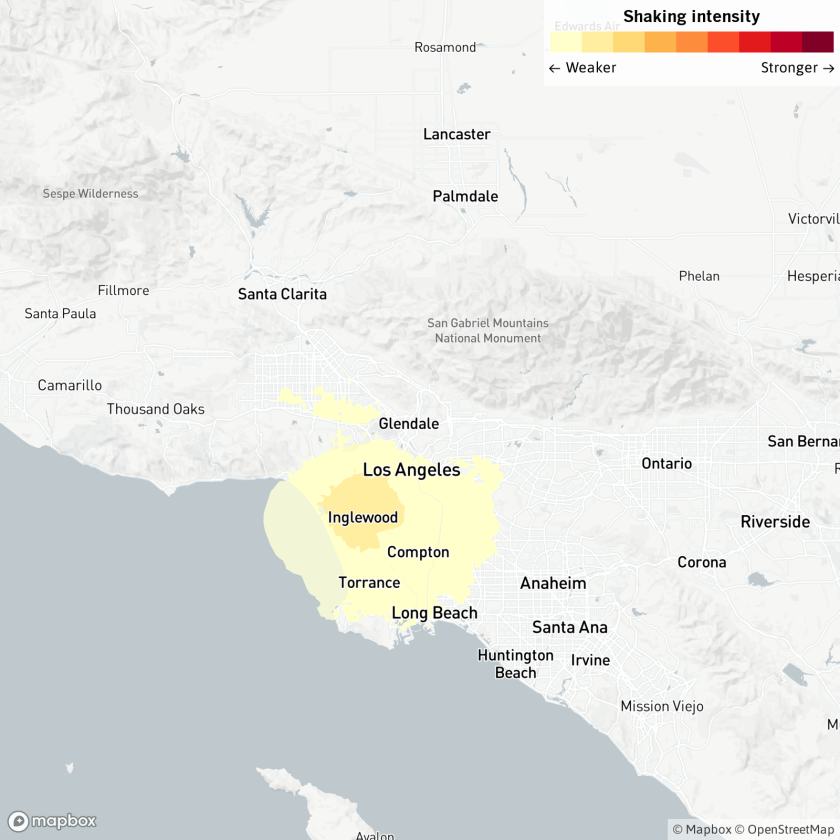A magnitude 3.7 earthquake that struck underneath South Los Angeles just after midnight Wednesday sent light shaking across the Los Angeles Basin.
The earthquake occurred at 12:03 a.m. Light shaking — felt indoors by many, and enough to rattle dishes and windows and rock parked cars — was calculated as occurring in South L.A., Inglewood, Culver City, Playa Vista and the Los Angeles International Airport.
Weak shaking was likely felt across the L.A. Basin and the San Fernando and San Gabriel valleys and northern Orange County.
The earthquake’s epicenter was about half a mile southeast of Slauson and La Brea avenues.
The earthquake occurred in the vicinity of the Newport-Inglewood fault zone. The Newport-Inglewood fault has long been considered one of Southern California’s top seismic danger zones because it runs under some of the region’s most densely populated areas, from the Westside of Los Angeles to the Orange County coast.
The Newport-Inglewood fault was responsible for the deadliest earthquake in the modern history of Southern California — the magnitude 6.4 Long Beach earthquake of 1933, which killed about 120 people.
The fault is now known to connect with the Rose Canyon fault system that runs into San Diego. Scientists believe earthquakes as large as
magnitudes 6.8 to 7.5 have struck the Newport-Inglewood/Rose Canyon fault system, which stretches from the border of Beverly Hills and Los Angeles through Long Beach and the Orange County coast to downtown San Diego.
In the past 10 days, there have been two earthquakes of magnitude 3.0 or greater centered nearby.
An average of five earthquakes with magnitudes between 3.0 and 4.0 occur per year in the greater Los Angeles area, according to a recent three-year data sample.
[...]
The first version of this story was automatically generated by Quakebot, a computer application that monitors the latest earthquakes detected by the USGS. A Times editor reviewed the post before it was published. It was subsequently revised by a Times journalist. If you’re interested in learning more about the system, visit our list of
frequently asked questions.


No comments:
Post a Comment